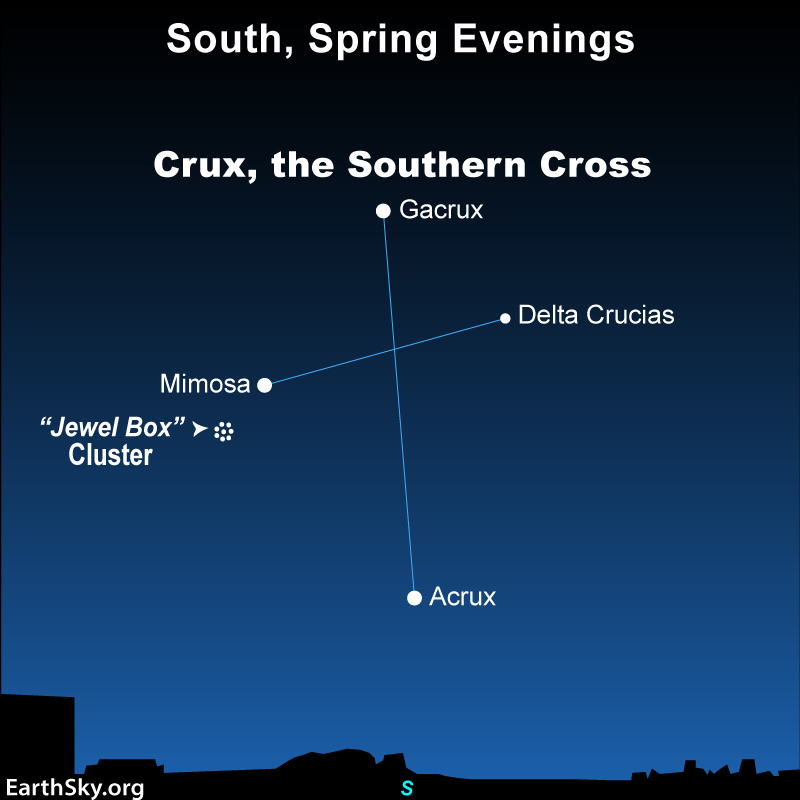
A star named Mimosa
Crux, the constellation of the Southern Cross, lies deep in southern skies. Its second-brightest star, Beta Crucis, bears a couple of nicknames, including Mimosa and Becrux. (The constellation’s brightest star, Alpha Crucis, has the nickname Acrux.) German astronomer Johann Bayer (1572-1625) may have been the one to call it Mimosa. Bayer’s reasoning is unclear, but it might be related to this star’s blue-white color. It could also be in honor of the mimosa flower, although most of those are purple, red or yellow.
Northerners’ guide to the Southern Cross
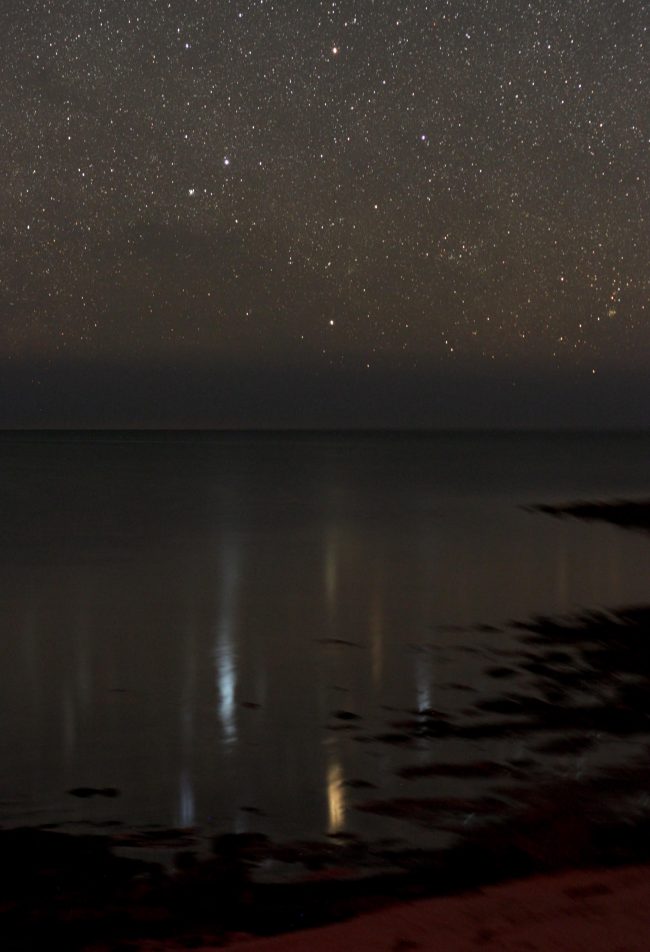
How to see Beta Crucis
Blue-white Mimosa is the 19th brightest star in all the heavens. It is the 2nd-brightest star in the constellation Crux the Southern Cross. The Cross is a Southern Hemisphere constellation, and you will not see Mimosa north of 30 degrees north latitude. Some cities near 30 degrees north latitude are Austin, Texas; Cairo, Egypt and New Delhi, India. Southern hemisphere observers know and love Mimosa, though, and it is circumpolar for latitudes of about 30 degrees south and higher.
A midnight culmination occurs when a star is roughly opposite the sun. It ensures that the star will be above the horizon a maximum amount of time. This occurs for Mimosa on or about April 2 each year.
The nearer the observer is to the northern observation limit of about 30 degrees, the lower the star will climb into the sky and the shorter the time it will be visible. For example, from Austin, the star barely skirts the horizon for about a half hour at most. Likely it could not be seen at all due to the dimming affects of Earth’s atmosphere. From Miami it rises almost 5 degrees above the horizon and stays up more than four hours.
From Northern Hemisphere locations such as Hawaii, where Mimosa can be seen more easily, it rises in the late evening in late winter, far to the south-southeast, and sets in the predawn hours to the south-southwest. By early June it rises before sundown and sets by midnight.
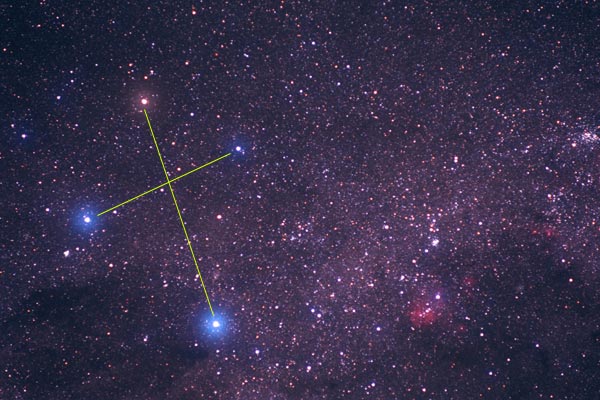
History and mythology of Mimosa
Because of its southerly location, Crux and Mimosa were essentially unknown in classical western mythology. Of course, these stars were well known to the Australian Aboriginal peoples as well as the Islanders of Polynesia and the people of southern Africa.
In Australia, for example, one Aboriginal story is that the stars of the Southern Cross are a reminder of the time and place where death first came to mankind. Two of the stars are the glowing eyes of the spirit of death, and the other two are the eyes of the first man to die.
The main stars of Crux, including Mimosa, appear on the flags of both Australia and New Zealand. Mimosa appears as the left side of the cross bar, and Acrux as the bottom of the Cross.
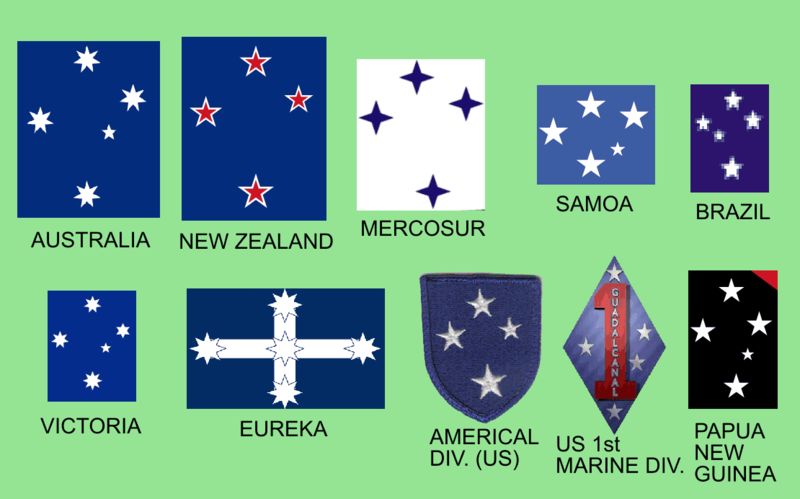
The science of Beta Crucis
Mimosa lies about 353 light-years from Earth, according to data obtained by the Hipparcos mission. It has a visual magnitude of 1.25. Mimosa is a giant (or subgiant) blue star, more than 3,000 times brighter than our sun in visible light.
Mimosa is blue and very hot. Astronomer James Kaler has estimated its temperature at nearly 28,000 kelvin (about 49,000 degrees F or 27,000 degrees C) at the surface. Such high temperatures demand that much of the the star’s energy be radiated in ultraviolet and higher frequencies invisible to the human eye. So, when you take this into account, Mimosa is about 34,000 times more energetic than the sun, according to Kaler.
Mimosa has a radius about eight times that of the sun, with a mass 14 times greater. However, these figures are uncertain. The reason? Mimosa has a small stellar companion about which little is known. Since all we can observe is the combined light of both, it’s difficult to be precise on the details. The star also is a complex variable with three short periodicities in its light, which varies less than a 20th of a magnitude over several hours.
Directly south of Mimosa is the Coalsack, a distinctive dark nebula in the Milky Way. The famous Jewel Box Cluster lies to Mimosa’s east.
Position of Mimosa (Beta Crucis) is RA: 12h 47m 44s, dec: -59° 41′ 19″.
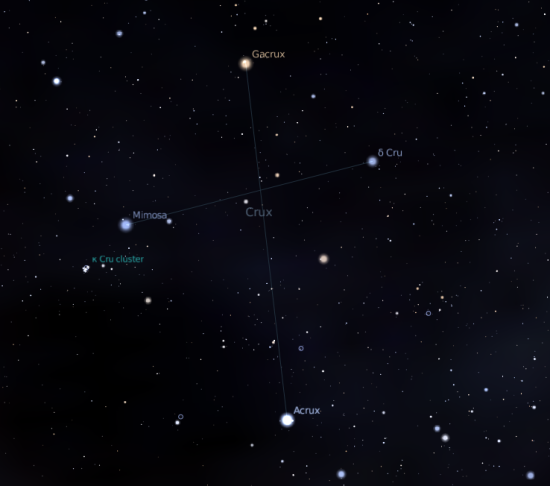
Bottom line: Mimosa is the second-brightest star in Crux, the Southern Cross.
Acrux is brightest star in Southern Cross
Southern Cross: Signpost of southern skies
How to see the Southern Cross from the Northern Hemisphere
The post Mimosa, 2nd-brightest star in Crux first appeared on EarthSky.
0 Commentaires